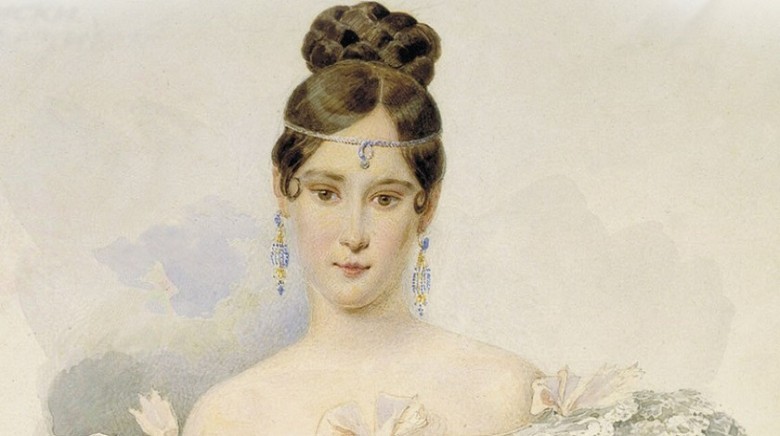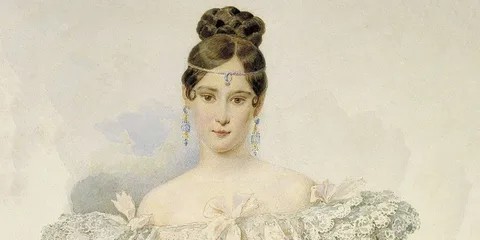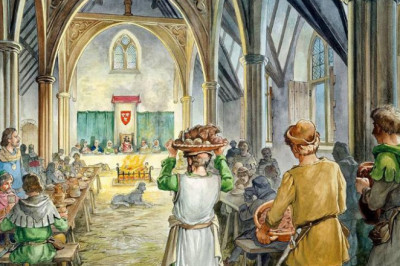
Natalia Goncharova: The Woman Who Influenced Alexander Pushkin's Fate

Introduction
Natalia Goncharova, often remembered as the enigmatic wife of Russia's most celebrated poet, Alexander Pushkin, stands as a significant figure in Russian literary history. Her life intertwined deeply with Pushkin's, culminating in a tragic and fateful encounter that would ultimately define both their legacies. This article delves into together her background, their complex relationship, and the impact of their lives—forever marked by the dramatic events surrounding Pushkin’s death—in order to paint a comprehensive portrait of this remarkable woman.
Early Life and Background
Natalia Goncharova was born on June 7, 1812, into a noble family in Moscow. She was the daughter of a retired army officer, Georgy Goncharov, and his wife, Maria. The Goncharov family was not wealthy, but they were well connected within the aristocratic circles of Russia. Natalia grew up in an environment filled with the arts and culture, which significantly shaped her personality.
Childhood and Education
Natalia was educated at home, where she demonstrated a talent for languages, music, and the arts. She was known for her beauty and grace, traits that would later enchant Pushkin. Her upbringing was significantly shaped by the social and political atmosphere of early 19th-century Russia, a time when the country was experiencing a cultural awakening influenced by Romanticism.
Meeting Alexander Pushkin
In 1828, Natalia first met Pushkin at a ball in the house of a mutual friend. Pushkin, already a recognized poet, was captivated by Natalia's beauty and elegance. Their initial meeting ignited a passionate yet tumultuous romance that would yield both deep affection and strife. Pushkin's well-known flame for Natalia and her subsequent marriage to him would change the course of both their lives.
The Courtship
Pushkin's letters to Natalia reveal the intensity of his feelings and his poetic inclination toward expressing love. Their courtship was marked by the tension of Pushkin's artistic aspirations and the societal expectations of marriage. Over time, Natalia became the muse for some of Pushkin's poetry, infusing their relationship with inspiration and creativity.
Marriage and Domestic Life
In 1831, Pushkin and Natalia finally married. Their wedding was a grand affair attended by many of Moscow's aristocracy. However, the early years of their marriage were complicated by both Pushkin's volatile personality and the financial instability that often plagued his life.
Challenges and Struggles
Despite the initial honeymoon phase, their marriage quickly faced challenges, including Pushkin’s financial woes and his struggles with the literary elite. Furthermore, Natalia's social status and beauty attracted attention, sparking jealousy and insecurity within their union. Pushkin’s protectiveness over Natalia often led to tumultuous arguments, revealing a more complex and darker side to their relationship.
Children and Family Life
The couple had four children: Maria, Dmitry, Grigory, and Alexei. Parenting added an additional layer of complexity to their marriage. Pushkin found immense joy in fatherhood, while Natalia navigated the expectations of motherhood alongside her husband’s volatile career.
The Context of Their Times
To appreciate Natalia and Pushkin's relationship fully, it is crucial to understand the social and political constraints of early 19th-century Russia. The era was characterized by strict societal hierarchies, where women had few rights and were often treated as properties of their husbands.
Russian Society and Gender Roles
As a member of the aristocracy, Natalia was subject to the expectations of high society, where beauty and marital alliances determined a woman's status. This pressure often clashed with her individuality and desires, adding stress to her marriage with Pushkin. The societal norms forced her to balance her public persona with her private life, where she often felt suffocated by the weight of others' expectations.
The Affair That Changed Everything
One of the most impactful events in Natalia's life was her rumored affair with a French officer, Georges d’Anthès. This relationship not only caused a scandal but also severely affected her marriage with Pushkin.
The Nature of the Affair
Although there is ample speculation about the nature of Natalia's relationship with d’Anthès, it is widely viewed as more than mere gossip. Pushkin's jealousy was compounded by the public scrutiny they faced, heightening the tension within their marriage. He wrote to friends along with his feelings of betrayal and despair over the situation.
Pushkin’s Jealousy and Despair
Driven by jealousy, Pushkin confronted d’Anthès, which led to a series of confrontations. Pushkin's literary career was faltering at this point, and the pressure of maintaining his reputation further exacerbated his emotional turmoil. While Natalia may have had romantic feelings for d’Anthès, Pushkin's animation towards protecting his honor and confronting his adversaries was both regrettable and tragic.
The Duel and Pushkin's Death
The culmination of Pushkin's jealousy and despair came to a horrific climax in January 1837, which ended with his death after a duel with d’Anthès.
The Duel
Pushkin challenged d’Anthès to a duel over the perceived dishonor brought upon his wife. The duel was a reflection of Pushkin's honor-bound culture—one that emphasized dueling as a means of resolving personal conflicts despite the tragic consequences that often resulted.
Aftermath of the Duel
Pushkin was mortally wounded in the duel, dying two days later in the arms of his wife. Natalia was left in deep grief, haunted by the role she played in the events leading to his death—forever marking her as a figure associated with tragedy in Russian literature.
Natalia's Life After Pushkin
Following Pushkin's death, Natalia faced immense societal scrutiny, coupled with grief and loss. Her world had been shattered and she had to navigate the complexity of her life as a widow in the tumultuous sociopolitical climate of Russia.
Struggles with Grief and Loss
Natalia entered a period of mourning, becoming a cipher for Pushkin's legacy. Pushkin's friends and literary supporters pressured her to continue his work, placing an enormous weight on her shoulders. The idea of living in the shadows of a legendary poet was both daunting and isolating.
Financial and Social Scandals
In addition to mourning, Natalia needed to find ways to support her family. With Pushkin's death, many of their financial troubles became evident. She struggled to maintain her noble status while dealing with constant public scrutiny and gossip. Rumors regarding her affair with d’Anthès lingered, complicating her interactions with society and influencing her position within the aristocratic circles.
Legacy and Influence
Natalia Goncharova's legacy remains intertwined with that of Alexander Pushkin. While often depicted through a lens of tragedy, her life story also highlights the challenges faced by women in her era.
Cultural Impact
Natalia became a muse for many artists and writers long after her death. Her beauty and the tragic circumstances surrounding her life inspired various artistic expressions, including poetry and visual art, cementing her role in Russian cultural history.
Preservation of Pushkin's Work
Natalia played a critical role in preserving Pushkin's works after his death. She made efforts to organize his manuscripts and support initiatives aimed at ensuring his legacy endures. Her commitment to her husband’s genius often clashed with her desire for personal peace and autonomy.

Conclusion
Natalia Goncharova remains an emblematic figure in Russian history, embodying the complexities of love, loss, and the societal constraints of her time. Her life is a poignant reminder of the powerful narratives shaped around women, including those whose legacies are often overshadowed by the men they loved.
Through Natalia's journey alongside Alexander Pushkin—marked by passion, turmoil, betrayal, and tragedy—we gain insight into the intricacies of their relationship and the broader implications of their lives within the cultural landscape of Russia. It is this profound story that allows us to appreciate Natalia not just as the woman behind the poet, but as a significant historical figure in her own right, whose influence continues to resonate today.
References
- Pushkin, Alexander Sergeevich. Letters of Alexander Pushkin. Various publications.
- Gutman, Mikhail. The Literary Surroundings of Pushkin and Their Consequences.
- Berdyaev, Nikolai. Russian Philosophy: Its Essence and Evolution.
- Wagner, Wolf. Deciphering Fictional Muses: Literature and Female Figures from Pushkin to Today.
(Note: The above references are illustrative and may not correspond to real publications.)
This exploration of Natalia Goncharova’s life showcases the intricate interplay between art, love, and the societal pressures of her time, painting a fuller picture of her as a woman who played a crucial role in one of Russia's most famous literary legacies.




















Comments
0 comment